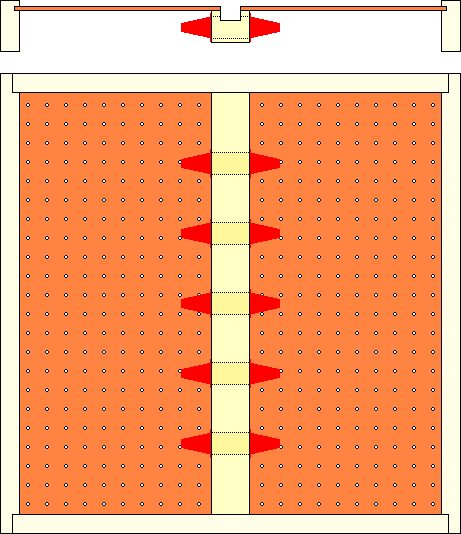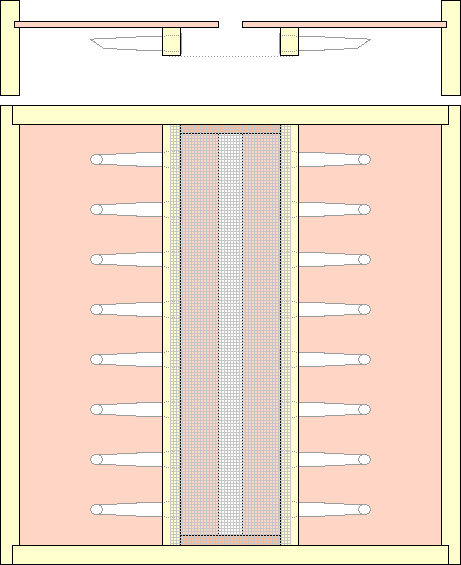Cone Escapes
|
|
|
|---|
Shaparew Bee Escape Board
Looks complex at first sight, but is not difficult to construct.
|
Cone Escapes |
Shaparew Bee Escape BoardLooks complex at first sight, but is not difficult to construct. |
|---|
|
Vladimir Shaparew in Canada tried to understand the psychology of what motivates bees to move through escapes and out of supers. Steele and Brodie constructed clearer boards to this particular design in UK until they ceased their manufacturing operation. The perforated sheet that forms the two main panels is 'peg board' that is sold for storing tools on the wall. As this material is not waterproof it is recommended that several, generous applications of linseed oil are given. The use of the perforated panels can be extended to any kind of clearer or escape board. The central strip is 32 mm deep x 38 mm wide with five 22 mm lateral borings. A rebate 19 mm wide x 9 mm deep in the top face of this strip allows the bees access to the horizontal borings and hence to the red cones themselves. The total height of this board, as manufactured, is 51 mm, I would suggest increasing this figure to 70 mm or 80 mm to allow more clustering space under the device and a 22 mm top rim. The red cones are available in UK bee supply outlets, but the caulking nozzle is more like the shape of the tinplate cones used in many of Shaparew's trials. |

|
|---|
In view of this and other fragments of information I offer the novel design below as a possible alternative for the home constructor.
|
This design incorporates several ideas from various sources:- The 20 mm depth of top rim was mentioned by Matthew Allan. The mesh covering on the underside of the central portion is from work by Shaparew. The caulking nozzles are my idea (triggered by Shaparew's work and a box full of them in my workshop). The deep skirt has been found useful by many different people when researching escape boards. Construction is not as daunting as the complexity may lead you to think. The strips that the nozzles are glued into are 28 mm x 18 mm (a standard size in UK) (use "No Nails" glue). The small fillets to support the ends of the "8" mesh are 28 mm x 9 mm. The plywood panels are 6 mm thick and the gap between their inner ends is 24 mm ('peg board' would be an alternative). The skirt is made from 85 mm x 18 mm (another UK standard). |

|
|---|
The drawings on this page are for National sizes and are at a scale of 1 pixel = 1 mm.
Originated... December 2000, Revised... 04 April 2002. Revised... 16 January 2003 Upgraded... 20 September 2005,
|